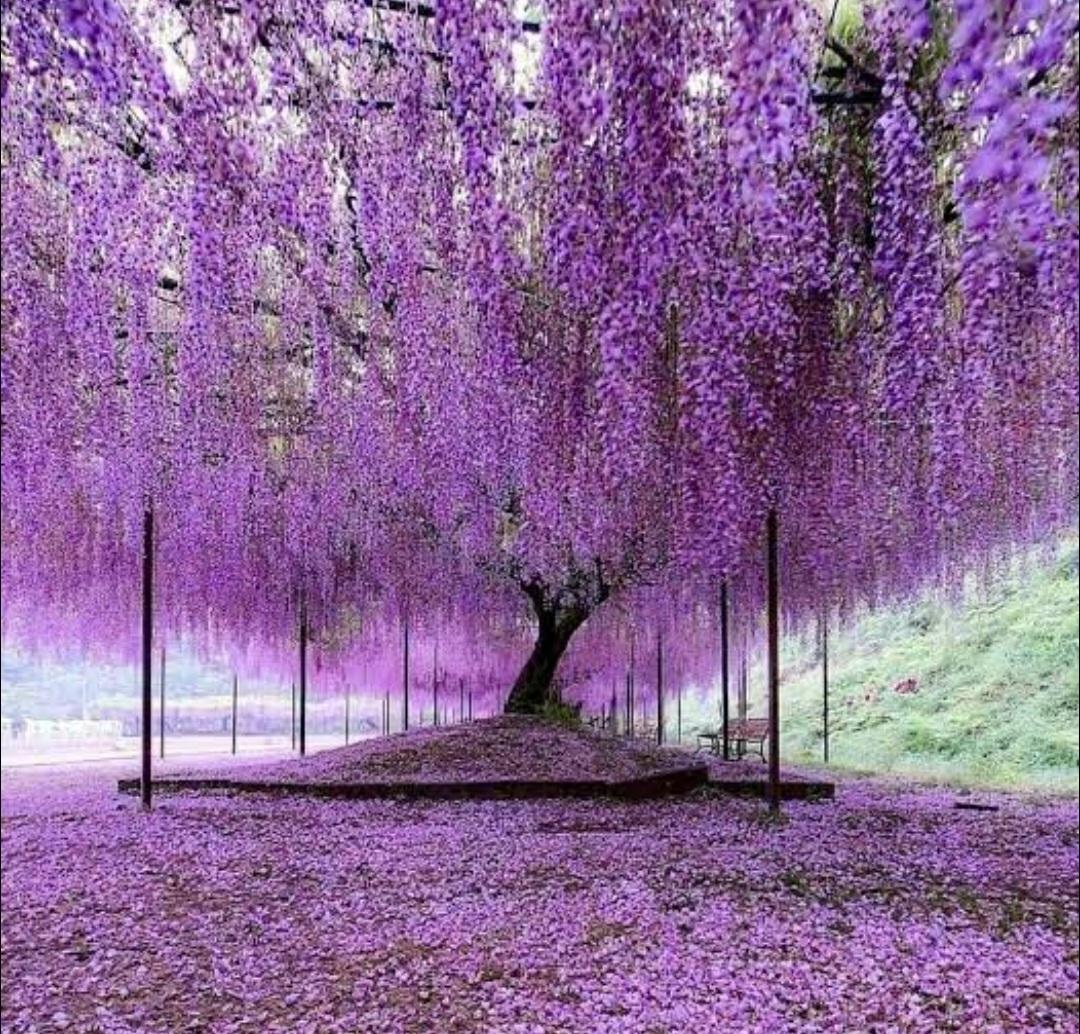Wisteria is a genus of climbing plants known for their long, fragrant flower clusters that hang from their branches, often in shades of purple, pink, or white. They are native to Asia and North America but are cultivated globally for their ornamental value. While sometimes referred to as a "tree," Wisteria is typically a woody vine that needs support to climb or can be trained as a standard tree.
Here's a more detailed look at Wisteria:
Characteristics:
Growth Habit:
Wisteria vines are strong and fast-growing, capable of reaching significant sizes. They can be trained to climb structures like trellises, pergolas, or walls, or they can be grown as free-standing standards.
Flowers:
Wisteria flowers are produced in large, drooping clusters (racemes) in late spring and sometimes early summer. The flowers are fragrant and come in various colors, including purple, pink, white, and lilac-blue.
Leaves:
Wisteria leaves are compound, with multiple leaflets arranged in a feather-like pattern. They turn yellow in the autumn before falling.
Fruit:
Wisteria bears long, bean-like pods that contain seeds.
Toxicity:
Wisteria seeds and other parts of the plant contain a saponin called wisterin, which is toxic if ingested and can cause gastrointestinal upset.
Cultivation and Care:
Sunlight and Soil:
Wisteria thrives in full sun and well-drained soil, but it can tolerate light shade.
Pruning:
Pruning is important for encouraging flowering and controlling growth. It's typically done twice a year, once before the plant leafs out in spring and again after flowering.
Support:
Wisteria vines need support to climb. This can be provided by structures like trellises, pergolas, or even the branches of other trees.
Training:
Wisteria can be trained as a standard tree by pruning and encouraging a single main stem to grow upwards.
Symbolism:
In some cultures, Wisteria flowers are associated with romance, good luck, and success.
Note: Wisteria is an invasive species in some regions and can be harmful if not managed properly.
Wisteria, especially W. sinensis (Chinese wisteria), is very hardy and fast-growing. It can grow in fairly poor-quality soils, but prefers fertile, moist, well-drained soil. It thrives in full sun and can be propagated via hardwood cutting, softwood cuttings, or seed.

